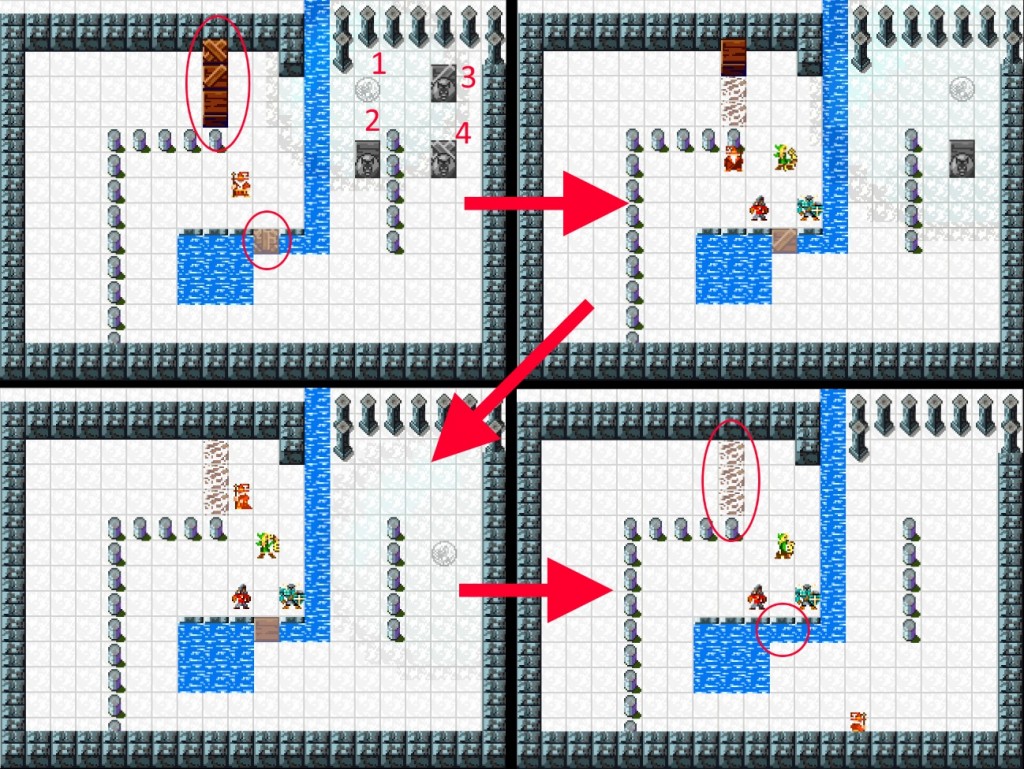One of the flaws in Soulcaster I & II was the lack of information the player got in terms of what the next phase of the battle would be. Enemies would simply spawn out of the woodwork, without warning, and you’d have to deal with them immediately. If you’ve got the skills, this isn’t the end of the world, but on your first run through the game, it’s likely you’ll get overwhelmed, have to burn a scroll and a potion, and run around kiting the enemies while trying to set up a formation. It makes it less about tractical positioning and more about fleeing for survival.
In an effort to move the needle a bit from “action” to “strategy”, I developed a system to hint at the evolution of the battle. It involves multi-stage breakable walls and floors, which change the layout of the room as the battle progresses.

In keeping with Escape Goat tradition, the wooden boxes on the top left are breakable. The boards on top show how many remaining hits the box can take before it is destroyed. There’s also a bridge beneath the summoner, which eventually gets destroyed–this way, the battle can both open up new passages, and close off old ones.
In the first two games, I had a system linking spawners to gates (often disguised as regular walls), which broke down walls and bridges as things moved forward. This worked fine, but usually gave no indication where the next gates were going to be destroyed.
The gray blocks on the top right work just like the wooden boxes, but they’re supressing the spawners they cover. As the spawners are uncovered, they become active and start pouring out foes.
It’s hard to describe, so maybe this image will help illustrate what’s happening:
 This system allows for multiple waves of enemies, and offers some hints about where the next wave is coming from. It also shows where you might have to reinforce defenses (for example, if a wall is about to come down, and enemies can start to flank you from another side).
This system allows for multiple waves of enemies, and offers some hints about where the next wave is coming from. It also shows where you might have to reinforce defenses (for example, if a wall is about to come down, and enemies can start to flank you from another side).
So what is breaking the boxes? Currently I call it a shockwave–when the last active spawner is destroyed, it shakes the entire room, damaging all destructible objects (and destroying the ones with only one hit left). This might work well with a screen shake… you know, tastefully done, of course.
One cool “maybe” feature I thought of is the ability to invoke a shockwave at will, perhaps with a consumable item. You could accelerate the battle this way, dealing with two waves at once–great for going for a speed run. There might also be rooms that have passages, items, or even spawners blocked off with a breakable wall, and you have to spend the shockwave item to gain passage.
I’m pretty close to being able to reproduce one of the Soulcaster I levels here. Once it’s set up, the procedural level generator can customize the number of waves, types of monster, strength of monster, rotation and flipping of the layout… and eventually, there might be other parameters added to the mix, like optional blocks and bridges that might make things easier or harder.